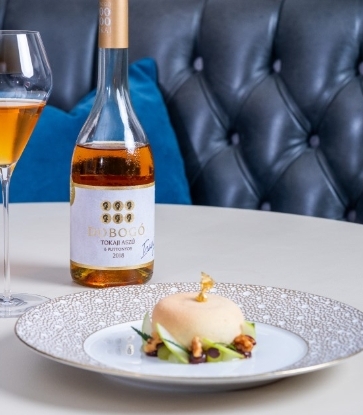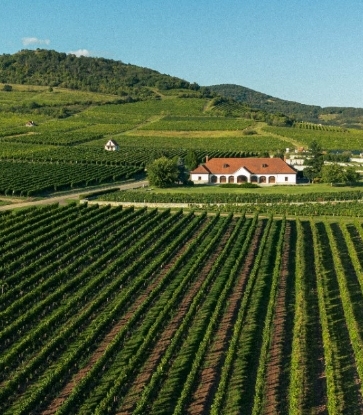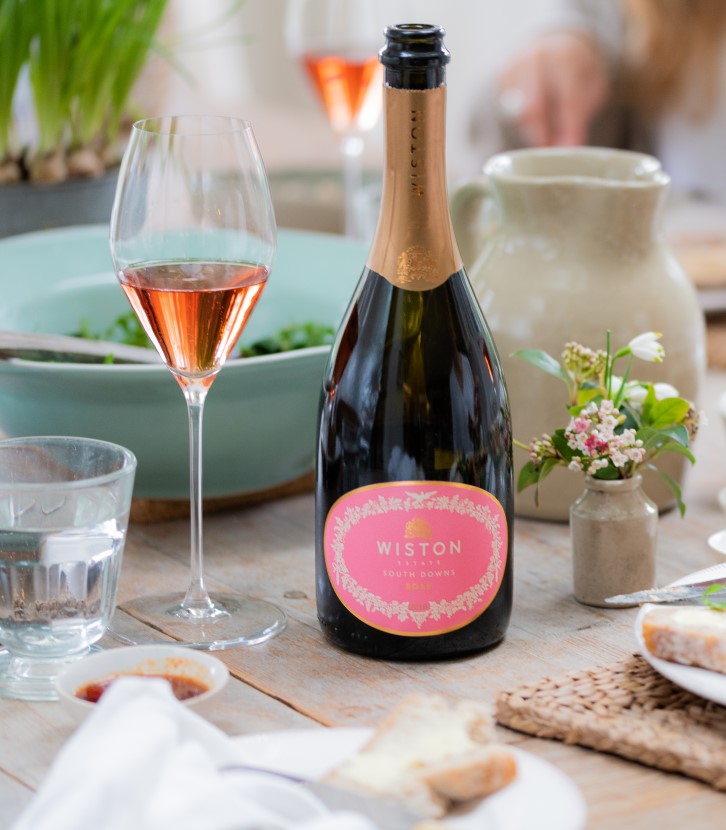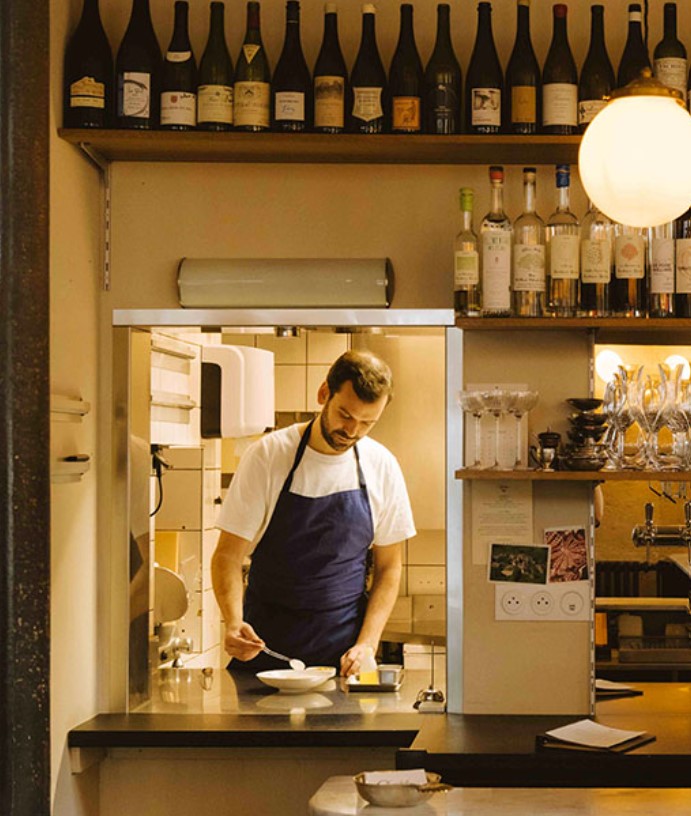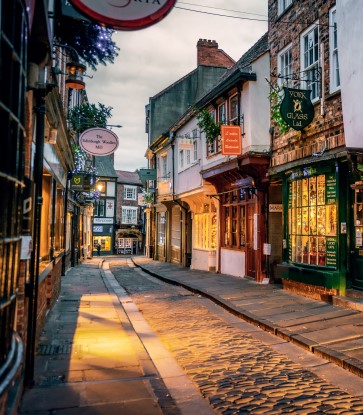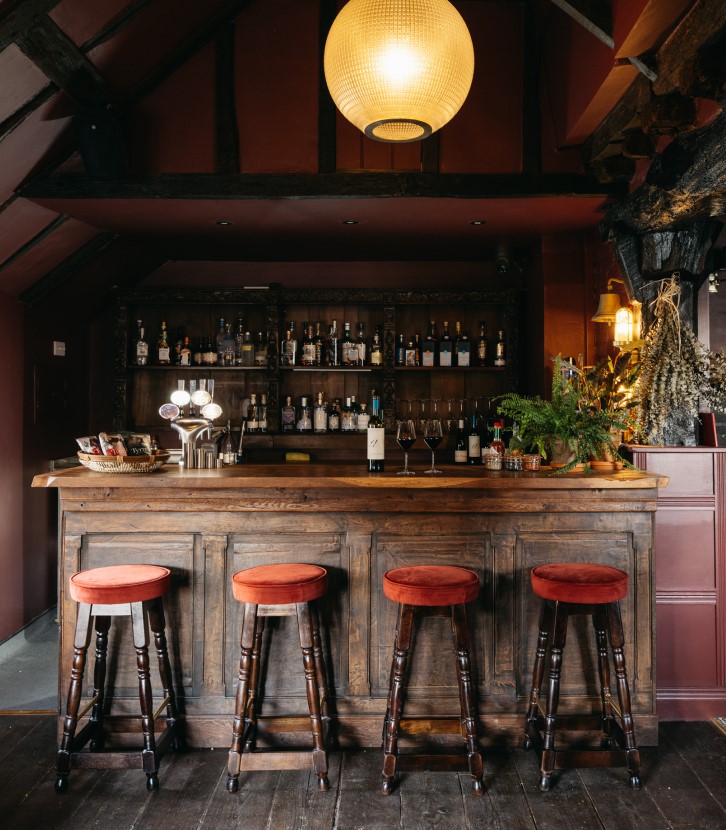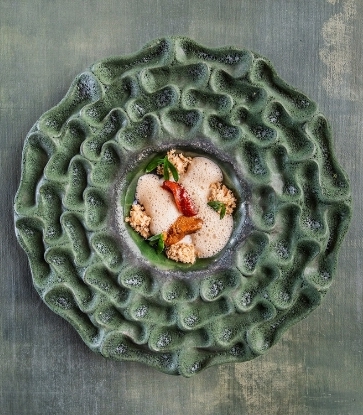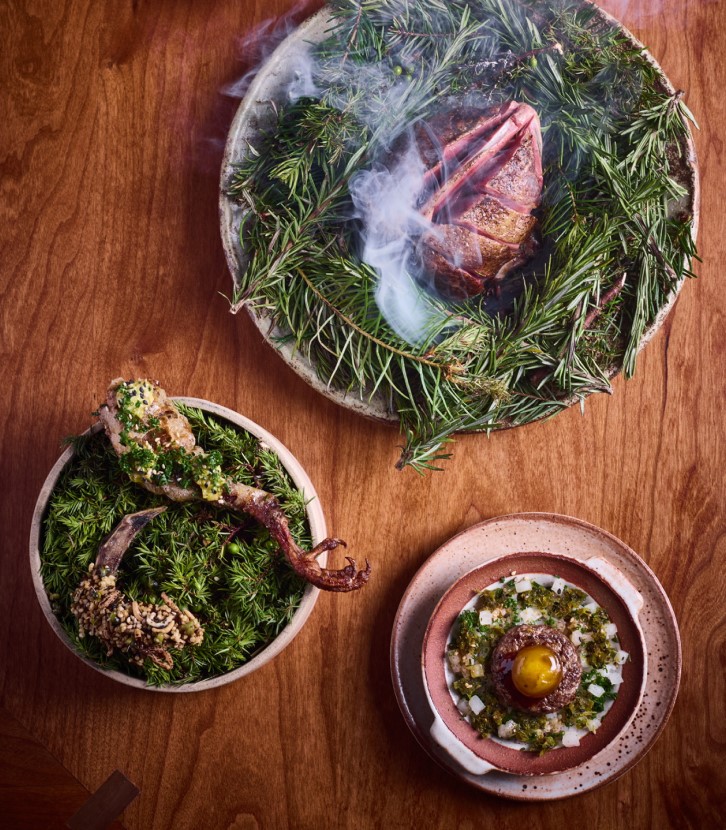Moselle is not only France’s northernmost viticultural PDO, it is also one of its youngest (created in 2011) and one of its smallest with only 185 acres of planted vines… Yet, it is without doubt also one that will spark the most interest in the years to come!
Moselle’s PDO vineyards lie to the northeast of the Paris basin in Lorraine, on sedimentary rocks comprised of limestone, sandstone and marl dating from the Secondary Era extending from the Jurassic to the Triassic. Today 60% of the vineyards are organic, producing mostly white (60%), but also red (30%) and rosé wines (10%), known as “gris” with a pale salmon pink hue. The surface area concerned is in fact tiny — in 2024, no more than 16 winegrowers produced some 330,000 bottles, which is something of a drop in a magnum when compared with neighboring Germany (whose Moselle vineyards cover over 22,000 acres).
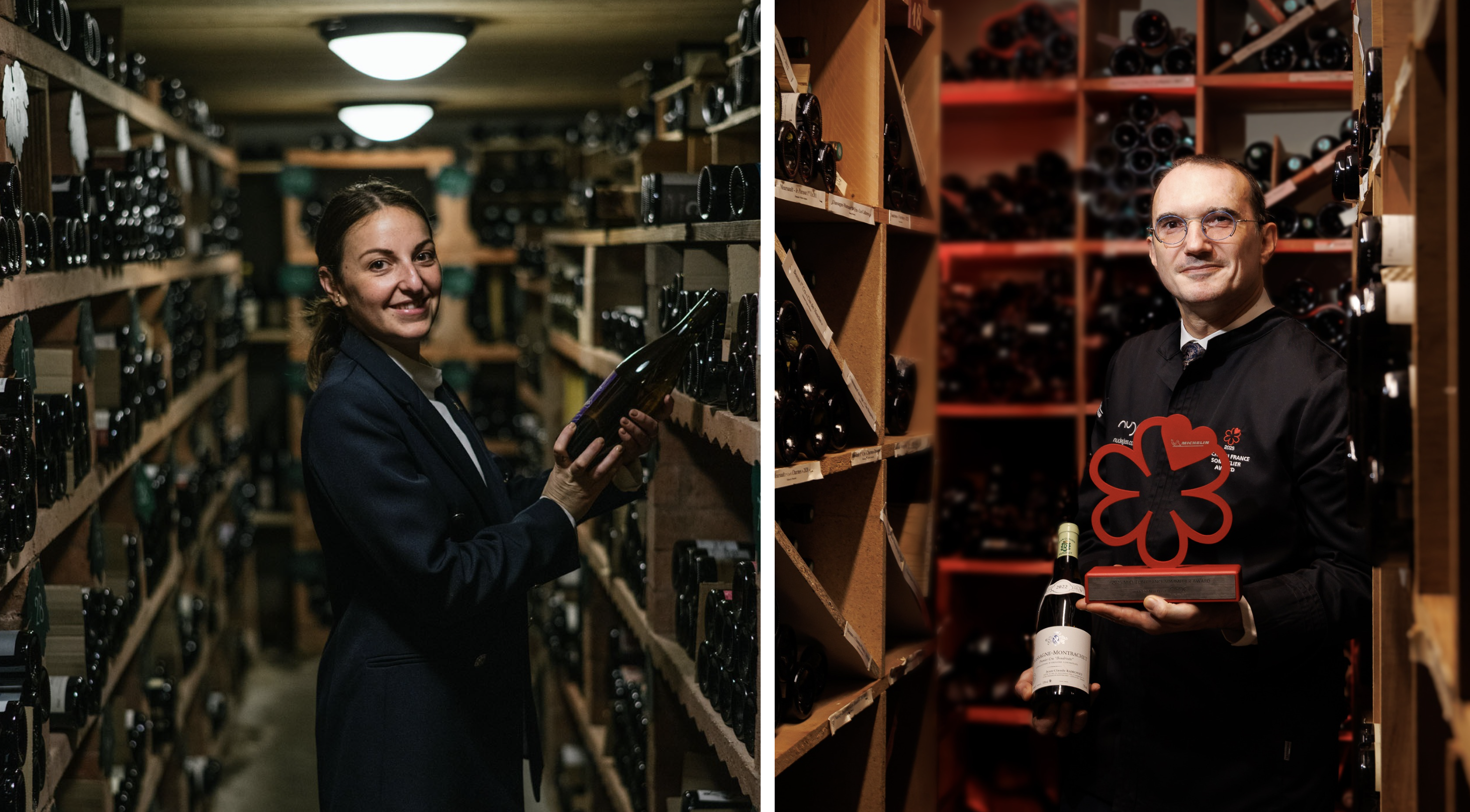
Jean Dumontet, the 2025 MICHELIN Sommelier Award winner and curator of the wine cellar at One-MICHELIN-Star Frédéric Doucet, tells us: “Moselle is a little-known winegrowing region, barely any bigger than Burgundy’s Vougeot PDO [which represents some 165 acres]. However, Moselle’s PDO is evolving fast and should be taken seriously today. It produces wines that are both refreshing and elegant, by vineyards that are now benefiting from global warming, whereas the vines and grapes struggled to ripen and reach maturity in former times. Today, this PDO produces highly palatable, pleasant wines, which are, what’s more, very affordable for savvy, curious consumers.”
Maéva Rougeoreille, who jointly won the 2025 MICHELIN Sommelier Award with Dumontet, is Head Sommelier of the Two-Star and Green Star restaurant Jean Sulpice (Talloires Montmin). She explains: “Sure, it is a small PDO in terms of current surface area, but this emerging region is definitely worth keeping an eye on. It has long been overshadowed by its neighbor Alsace, as Savoie wines were by Jura. However, I am certain that it will create a major buzz in the coming years!” Born in New Caledonia, Rougeoreille is responsible for a cellar of over 25,000 bottles and she continues to enrich her wine list, which boasts over 3,500 choices, with up-and-coming French and foreign wines.
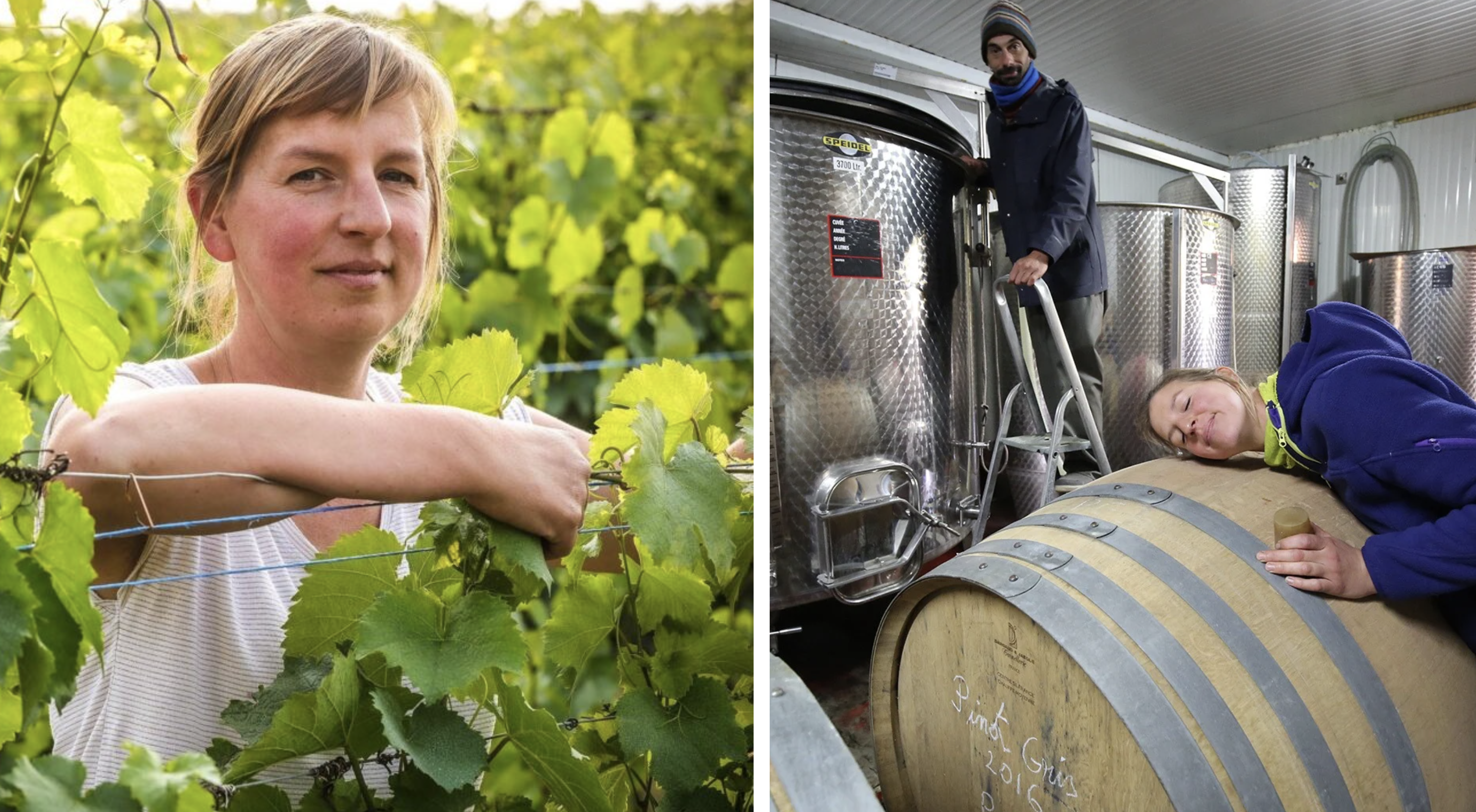
A 46km-Long Wine Route
The white wines come from three main grape varieties: Auxerrois, Müller-Thurgau and pinot gris. They provide distinctive fruity apricot and peach notes. Other white grape varieties include gewurztraminer, pinot blanc and riesling. The rosés are comprised of a minimum of 70% pinot noir and can be supplemented by gamay. The red wines are made from a single variety, pinot noir. Maéva Rougeoreille applauds this decision to work with a single grape variety that is emblematic of many famous PDOs (pinot noir in Burgundy and riesling in Alsace), “and which, in the case of Moselle, currently offers unrivalled value for money.”
The PDO is roughly comprised of three areas: the Val de Seille, which is home to the village of Vic-sur-Seille; the Sierck region (the Three Borders), which encompasses the villages of Contz-les-Bains, Haute-Kontz and Sierck-les-Bains; and lastly, the Messin in which the 15 other PDO villages are located. Most of the vineyards are clustered around Metz — where the MICHELIN Guide Ceremony 2025 was held in March — and stretch for 46km along the Moselle Wine Route, combining tourism and tasting opportunities by offering the chance to meet Moselle's foremost ambassadors. Most of the dry (no residual sugar) white wines grow on this clay-limestone soil, as do the finest pinot noirs, sometimes called the most "Burgundian." The latter produce wines that are characterized by notes of cherry, small black fruit and even Burlat cherry in the best vintages.
Jean Dumontet, a connoisseur of Burgundy grand crus, says: “I actually became acquainted with the wines of this tiny PDO during the MICHELIN Guide Ceremony in Metz last March. I am lucky enough to live in the village of Charolles in Burgundy, on the doorstep of a world-class wine region, so I naturally took more time to sample Moselle’s red wines, also produced from pinot noir — and I was very pleasantly surprised! Those that I tasted (during the rather euphoric evening), were refreshing and succulent. There was one Moselle pinot noir in particular that I tasted blind which called to mind a Côte Chalonnaise Burgundy, namely La Digoine by the Domaine de Villaine. It produced the same crisp, refreshing mouthfeel, even in the case of the warmer years, with Burlat cherry notes and a velvety palate, yet paired with a delicate acidity and hints of red berry fruits that were reminiscent of some Mercurey wines.”
An Ancient Vineyard of Roman Heritage
When you leave the city of Metz on the northbound road you will be treated to a jaw-dropping panorama that stretches out on either side of the border between Luxembourg and Germany. The vines grow along hillsides up to an altitude of 250m overlooking the banks of the Moselle in the Val de Sierck-les-Bains. Despite the PDO’s youth (established in 2011), the region itself is far from young and the history of Moselle wine dates back to Roman times. Indeed, the beauty of Moselle’s hillsides covered in vineyards was celebrated by the Roman poet Ausonius in the 4th century: “When the azure of the river reflects the shadows of the hill, the water seems to have leaves and the river to be planted with vines.” The city of Trier, some 113km upstream of the River Moselle, became the capital of the Western Roman Empire in the 3rd century and was a driving force in the growth of the wine industry in and around Metz.
Later on, religious communities, like Gorze Abbey founded by Bishop Chrodegang of Metz in 749 and Saint Vincent Abbey founded in Metz in the 10th century, further contributed to spreading the culture and know-how of winegrowing in the region. Aristocratic families such as the Counts of Vaudémont and the Dukes of Lorraine, who owned major wine estates, also fostered and spread the reputation of Lorraine’s wines beyond its borders.
The decree that awarded Moselle PDO status in 2011 was the result of long battle. For a long time, the region’s wines were known as “Moselle wines" rather than simply "Moselle." Then, after World War II, Moselle achieved AOVDQS (Appellation d’Origine Vin Délimité de Qualité Supérieure) status in 1951, but could still only be called “Moselle Wines,” before in 1995 acquiring AOVDQS status with the “Moselle” label, so all wines from the region could finally just be referred to as "Moselle."
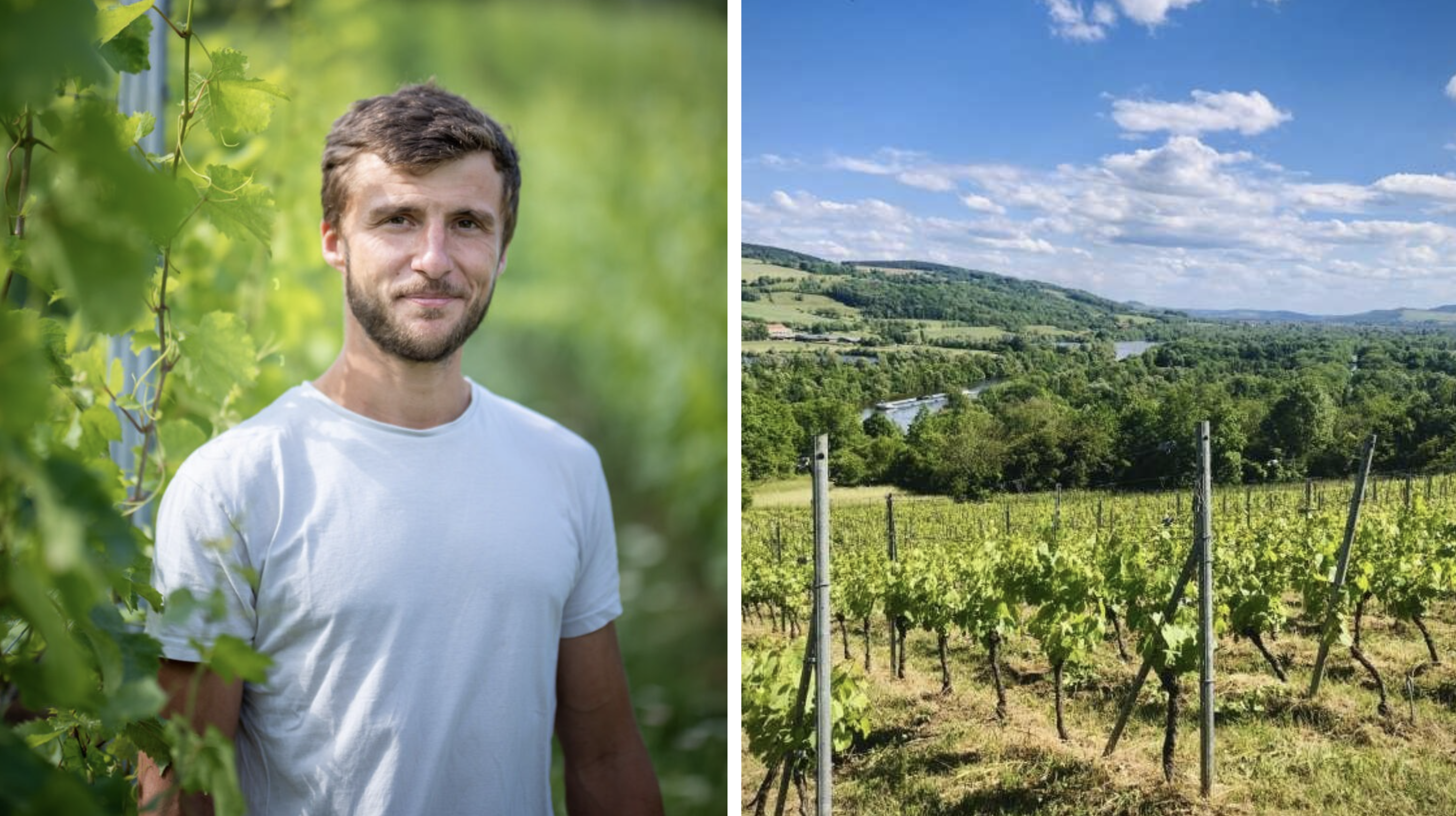
Vineyards That Almost Disappeared
In the heyday of the wine industry, in 1830 Lorraine was home to almost 100,000 acres of vineyards. Before the First World War, it still boasted some 15,000 acres and 40 or so winegrowers, but by the end of the Great War, the latter had dwindled to no more than four. In addition to war, the decline in the number of vineyards can also be contributed to an epidemic of phylloxera, a tiny insect that appeared in the Metz region in 1866, attacking the roots of vines and killing the plant within several years, as well as the growth of the steel industry.
As a result, by the early 20th century, most vines had been replaced by fruit crops — Mirabelle plums, pears, apples and strawberries. However, in an attempt to stem this tide, some were resisting and one such pioneer of the revival of Moselle wines was the grandfather of Ève Maurice, winegrower at Les Béliers estate in Ancy-sur-Moselle (see below). At the same time, new grape varieties were being introduced from neighboring regions: Müller-Thurgau from Swiss Jura, gamay and pinot noir from Burgundy, and Auxerrois, which contrary to what its name suggests, was created by the Laquenexy fruit research center by one Doctor Werner.
Nonetheless, by 1984 less than 7.5 acres of vines remained! The battle began for real, as a handful of bold winegrowers decided to reclaim and revive abandoned vineyards and to plant as much new stock as possible. Urban pressure and the patchwork nature of vineyards further complicated the issue. At this point, the vineyards embraced the Côtes de Toul PDO (to the south and 25km west of Nancy) and the Côtes de Meuse IGP and Lorraine IGP.
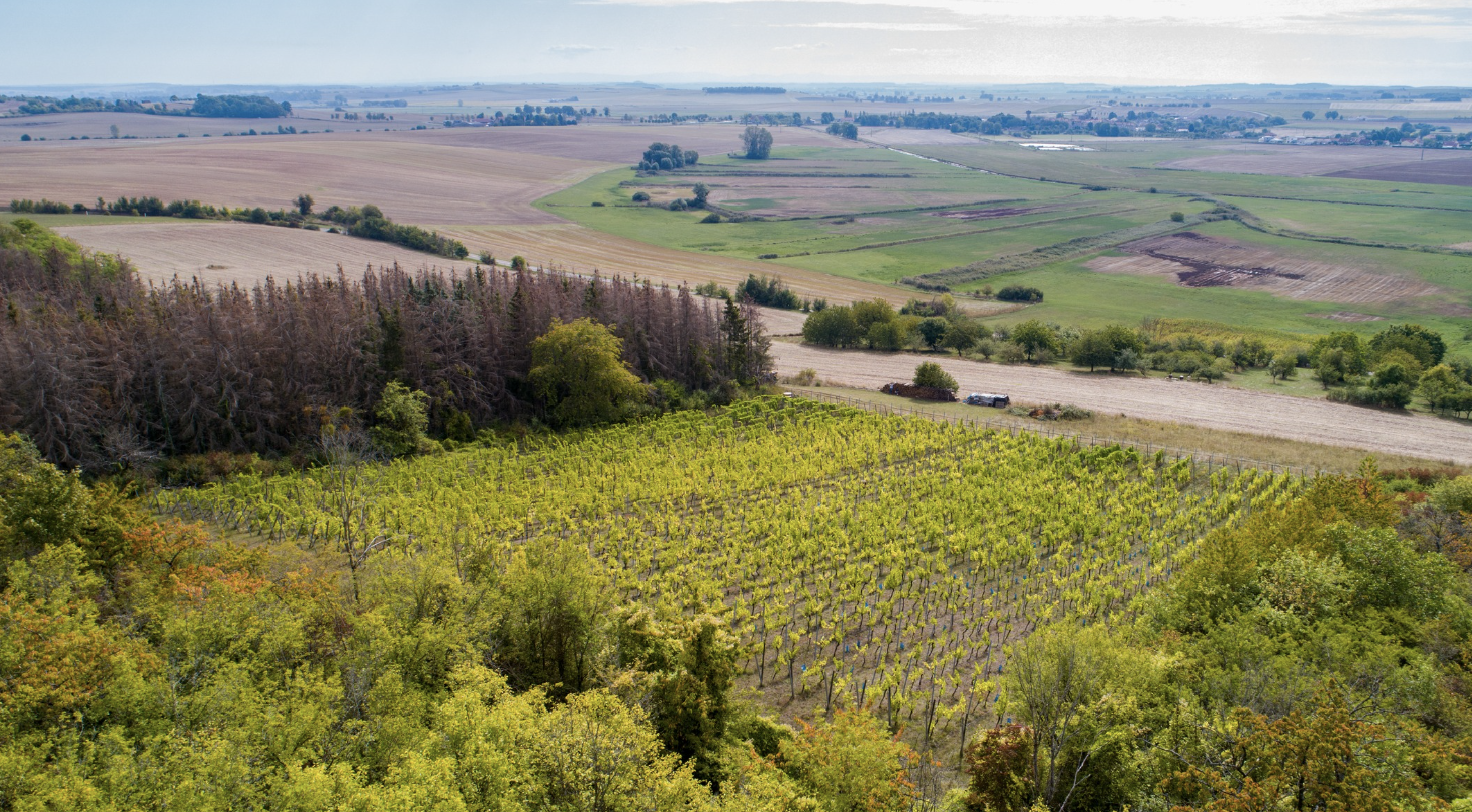
A High-Potential PDO
Moselle’s PDO vineyards boast an impressive lineup of resources. Firstly, its climate, which benefits from the influence of both the Rhine (higher altitude vineyards around Sierck-les-Bains) and Burgundy (lower altitude vineyards). What’s more, while the average alcohol content in wine in other regions has never stopped rising (15-16% alcohol), Moselle wines remain relatively low in alcohol, which is perfectly suited to the preferences of today’s consumer. They also boast a streak of originality thanks to the Müller-Thurgau grape variety, which is something of a rarity.
Another major advantage: Moselle PDO wines currently on the market are highly affordable. In the words of Jean Dumontet: “Winegrowers like Rémi Gauthier at Vic-sur-Seille [see below], who studied in Beaune and has a flair that can be qualified as Burgundian, embody a new generation that is more than worth looking out for!” For example, the 2023 and 2024 vintages of his white and red Primitiae cuvée are sold at €14 a bottle (from the cellar door), while his In Extenso white (from the same years) goes for €16.
In short, Moselle’s PDO is undoubtedly one of France’s fastest growing vineyards with a potential for expansion thanks to 1,650 acres of PDO-registered land in 19 villages of the INAO-approved geographic sector: 18 Moselle villages to which Arnaville, on the border of Meurthe-et-Moselle has been added. So, a word of advice to wine buffs — fill your cellars while there is still time!
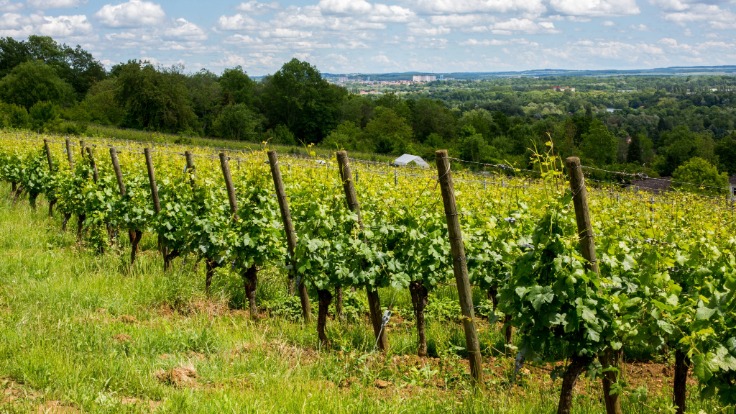
Eight Top Moselle Wineries
Domaine Maujard-Weinsberg
François Maujard quit the world of finance following the 2008 crash to start a brand-new career. After a course in viticulture and oenology in Beaune, in 2016 he created his own estate, acquiring the vineyards of three retired winegrowers in the Metz area. Audrey Puchalski, a former cash courier, came on board in 2022. Together they focus on cuvées from single plots and single grape varieties, all of which are low-intervention. In total, the estate is comprised of 7.5 organically farmed acres, spread over five villages in the Moselle hillsides: Vaux, Lessy, Rozérieulles, Plappeville and Jussy. The winery is housed in a former refurbished farm in historic Marange-Silvange. During the MICHELIN Guide Ceremony in Metz, Chef Nicolas Fontaine (Duende, Nîmes) fell in love with the Lacey pinot noir cuvée, harvested in 2020, thanks to its intense color and palatable, silky tannins. “During a blind tasting, it tasted just like a Burgundy pinot,” he exclaimed, amazed. By appointment: 9 rue de l'Eglise 57535 Marange Silvange. + 33 6 06 79 05 83.Château de Vaux — Vignobles Molozay
Norbert Molozay, who hails from a Beaujolais winegrowing family, and his wife Marie-Geneviève, Metz-born oenologist and daughter of a wine merchant, have been cultivating some 37 biodynamic acres since 2010. Tucked away in the heart of the hills overlooking the Moselle River and a 20-minute drive from Metz Cathedral, the estate is home to cellars dating from the 13th century. Examples include full-bodied red wines matured in barrels and designed to be kept, like the Pylae cuvée, or lively white wines, like Maddalena, made with saline Müller-Thurgau grapes. Their Bulle Xb, an extra-brut, non-dosed chardonnay, without the PDO label, is ideal for an aperitif. Villa Chazelles, 21 Rue de Moulins 57160 Scy Chazelles. + 33 3 87 60 20 64.Domaine Enivrance
According to sommelier Maéva Rougeoreille, this winegrower is in a class of his own. “In 2019, Nicolas Pierron took over a tiny plot of land, vineyards that were among the oldest in Moselle. After learning the trade in wineries such as Château de Vaux and Domaine Oury Schreiber, he and his wife Julia took the plunge, inspired by biodynamic methods and natural wines. His Instantannique 2019 white wine, an Auxerrois, is macerated for three months; it is ranked VDF (Vin de France) and is refreshing with spot-on tannins that make it perfect for pairing with shellfish and spices!” 42 rue des Vignerons 57420 Marieulles. + 33 6 49 58 41 75.Domaine Les Béliers
This is a single organic plot of just over five acres on the hills of la Croix Saint Clément. Ève Maurice of Ancy-sur-Moselle crafts sincere, fruity, crisp wines with just the right hint of acidity. By appointment, she will take you round her vineyard and invite you to taste her wines: pinot gris, Auxerrois, pinot noir and gamay. Cuvées include La Vigne aux Oiseaux, Nina and L’Auxerrois. Interestingly, the estate also offers two guestrooms in the winery, right in the heart of the vineyard. D6B entre Ancy et Gorze, 52 route de Gorze 57130 Ancy Dornot. + 33 3 87 30 91 48.Domaine Oury-Schreiber
This estate is one of Moselle’s largest, with 22 acres. A pioneer of red Moselle wines matured in barrels, the Oury family hails from Champagne and spent time in Languedoc before settling south of Metz. Their daughter, Angélica, returned to the property in 2011 with her partner Cédric and the couple have been deploying organic and biodynamic methods since 2008 on the well-exposed hills of Marieulles-Vezon and Lorry-Mardigny. The estate shows a particular fondness for sparkling wines (60% of the production). Cuvées include Henri II (sparkling, no PDO) and the white Les Quatre Éléments. 29 rue des Côtes 57420 Marieulles. + 33 3 87 52 09 02.Domaine du Stromberg
At Petite Hettange, right above the Château des Ducs de Lorraine, Jean-Marie Leisen, Bernard Petit and Thierry Caboz clubbed together to continue the Leisen family estate story across nearly 20 acres. Their wines are regularly awarded prizes at the prestigious Concours Général Agricole. Cuvées include Auxerrois and Müller-Thurgau (delicate astringency), as well as Les Contemplations 2014 (suave and fruity). 21-23 Grand rue 57480 Malling. + 33 3 82 50 10 15.Domaine Sontag
Marie-Antoinette, assisted by her husband Gérard, decided to relaunch this family winery in 1965 at Contz-les-Bains, a small village that hugs the winding Moselle River. Since 2007, their son Claude has been at the helm, joined in 2020 by his daughter, Mélanie. The estate encompasses almost 15 acres in total and the resulting cuvées include Les Blasons 2021 and Charmes 2024. 5 rue Saint-Jean 57480 Contz-Les-Bains. 06 78 59 35 95.Domaine Rémi Gauthier
In Saulnois, on the hillsides of Vic-sur-Seille, Rémi took over the family property, relaunched by his father in the late 1980s. One of the pioneers of the revival of Moselle wines, his father planted some 3,000 vines and produced a dozen or so vintages that were acclaimed by the industry and rewarded with medals. After sudying the theory of winemaking during his training at Beaune and learning the ropes in Ardèche with his brother Sylvain (Domaine des Pierres Sèches), Rémi now farms 10 organic and biodynamic acres. Cuvées include In Extenso Pinot Noir 2022, full-bodied and ideal to keep for 5-7 years; Primitiae Pinot Noir 2022, a wine to be drunk young, which is rich in ripe red fruit with slightly toasted notes and a refreshing finish; and In Extenso Auxerrois 2022, a balanced dry fruity white underscored by an elegant saline minerality. 19 Rue des Petites Salines 57630 Vic-sur-Seille. By appointment: + 33 6 23 45 63 31.More wineries: click here
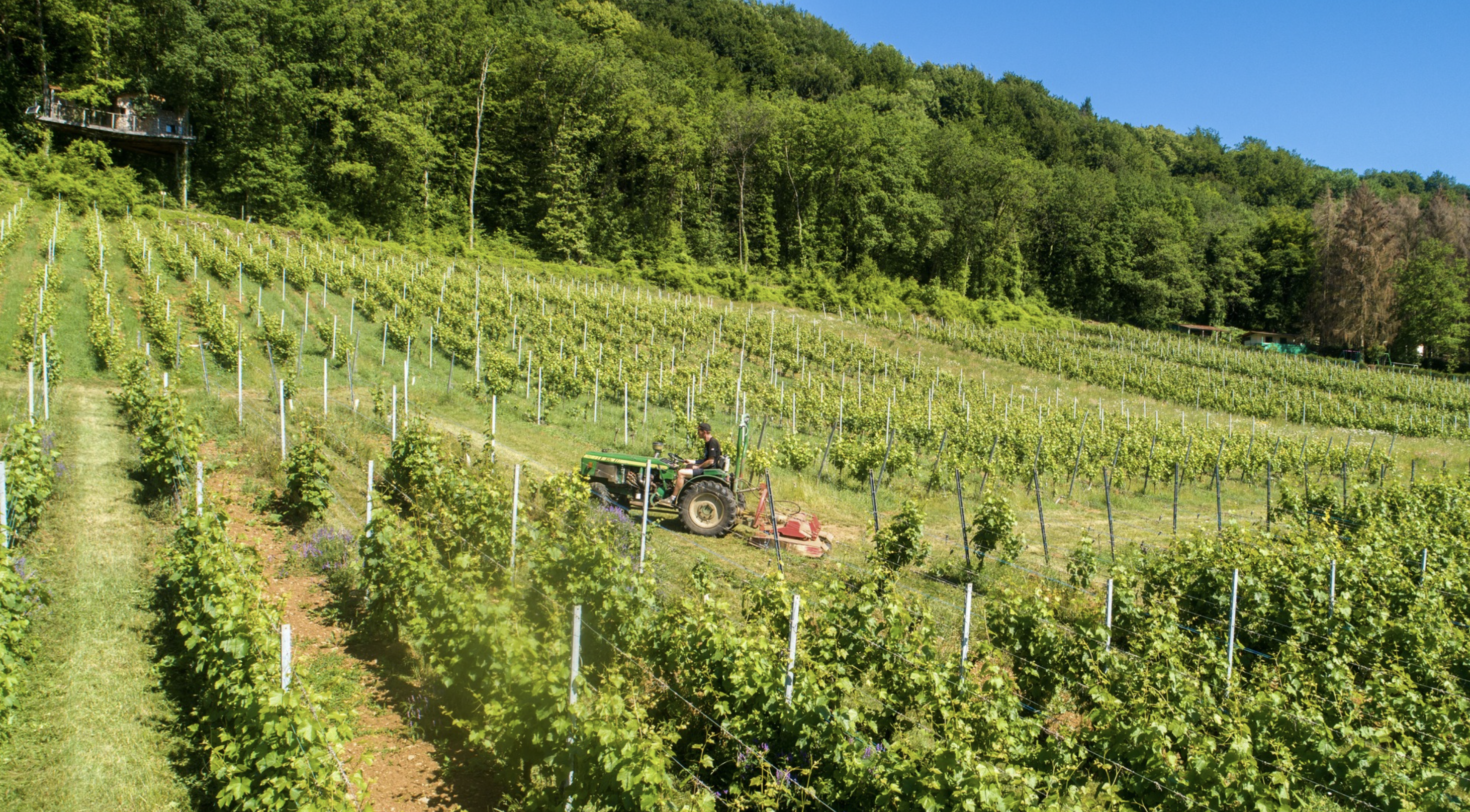
Hero Image: Thionville Moselle PDO. © Guillaume Ramon Sierck



